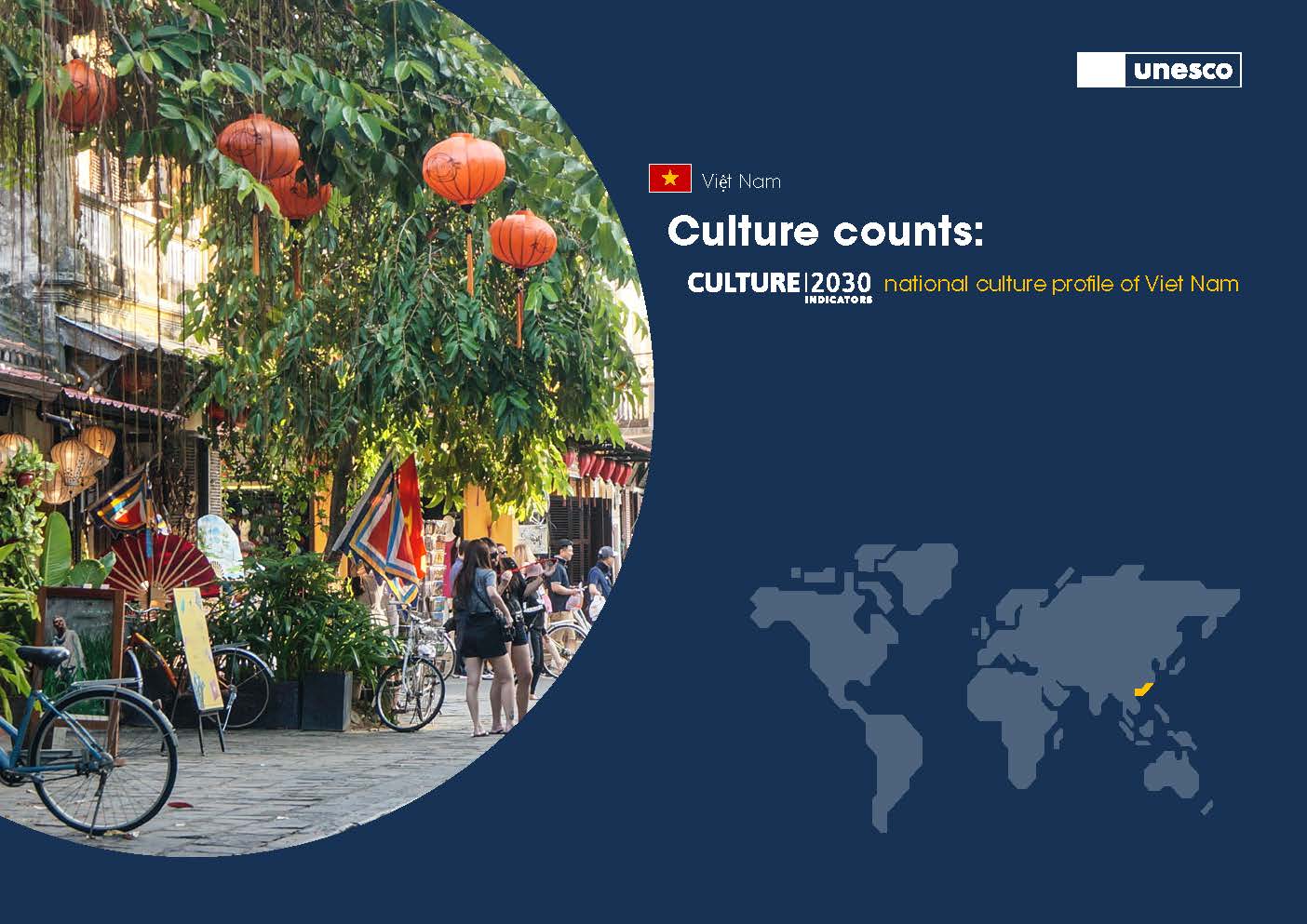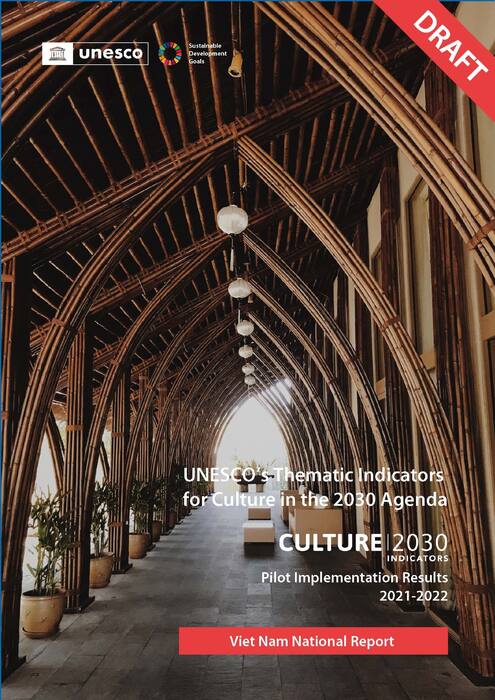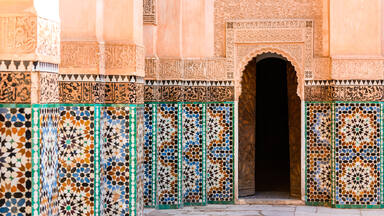Morocco has taken a number of steps to integrate culture into public policy, in order to strengthen the synergies between culture and economic, social and environmental development. This commitment is reflected in a number of references, including the Constitution, the framework law on the national charter for the environment and sustainable development, and the assessment of the Millennium Development Goals program. Against this backdrop, however, the New Development Model report published in 2021 notes the vagueness of the field of culture and calls for better coordination
The project was led by the Ministry of Culture, Youth and Sports at the national level and ran from October 2021 to July 2022. Urban level implementation for the city of Essaouira occurred alongside the national implementaiton with the support of the Muncicipality of Essaouira. The implementation teams were accompanied by UNESCO and a kick-off workshop was held on 17 and 18 February 2022, and brought together 91 participants from 63 stakeholders, including representatives of national and local authorities for the city of Essaouira, universities, civil society organizations, the private sector and other entities working in the field of culture.
The workshop introduced the methodology of the UNESCO Culture|2030 Indicators framework, during the workshop, the implementation teams, participants and experts collaborated together to define the framework for implementing the project by drawing up an inventory of existing cultural policies, as well as an identification and mapping of data sources and a list of stakeholders. Workshop participants were assigned indicators to contribute data to according to the specific skills of each institution. The finalized and validated indicators were then uploaded to the Culture|2030 Indicators Data Bank. Analysis of the results gave rise to exchanges between the implementation teams and UNESCO, and sometimes necessitated a review of the data collection and a few corrections to harmonize the results.
Implementation concluded in July 2022 with the organization of a restitution workshop to present and validate the results, share key messages and highlight culture’s contribution to sustainable development. The resitution workshop brought together a total of 52 participants, including 33 from the national level and 19 from the city of Essaouira. It provided an opportunity to discuss the approach, results and recommendations, promoting results dissemination to encourage policy action and advocated for commitments from stakeholders to focus on strengthening data collection, measurement and monitoring for culture.
Culture Counts: Culture|2030 Indicators urban culture profile of Alajuela

For the first time, a publication series titled 'Culture counts: The Culture|2030 Indicators Culture Profiles' uncovers and offers evidence of the profound impact of culture on sustainable development. Read the issue for Morocco.
Culture|2030 Indicators urban report of Alajuela

The summary results, key findings, analysis, and recommendations are based on the field document titled 'Culture|2030 Indicators National Report of Morocco'.
Expenditure on heritage
Data not available. This indicator could not be measured.
Sustainable management of heritage
An institutional and political framework is in place. However, the fight against illicit trafficking in cultural property lacks lists of stolen goods and a specialized unit.
Climate adaptation & resilience
Strategies have been put in place, but there is a lack of specific measures to manage natural risks to heritage.
Cultural facilities
With 2/3 of data being unavailable, the data collected remains partial, prompting the Direction Générale des Collectivités Locales (DGCL) to launch an inventory on the state of cultural facilities.
Open space for culture
The indicator is only measured at the urban level.
Culture in GDP
In 2019, the contribution was 0.84% of the GDP. When the craft sector is included, the figure rises to 1.24%.
Cultural employment
Culture creates 5.2% of total employment, rising to 10.4% if crafts are included.
Cultural businesses
The number of cultural enterprises is virtually stable: 28,341 and 31,265 between 2019 and 2020, or 5.9% of the total.
Household expenditure
Cultural expenditure accounts for 0.7% of total household spending, and 7.45% if specific Moroccan lifestyle items are included.
Trade in cultural goods & services
The cultural sector will contribute 0.1% of exported goods in 2021. Visual arts and crafts account for 88% of the sector.
Public finance for culture
Data not available. This indicator could not be measured.
Governance of culture
Elements of cultural action have been put in place, but a framework law is lacking.
Education for Sustainable Development
The principles of sustainable development are widely integrated into policies as well as into school, training and student assessment programs.
Cultural knowledge
"Education and awareness-raising" is the most effective method, thanks to the many educational programs on heritage.
Multilingual education
In primary education, more than two-thirds (67.1%) of teaching hours are devoted to multilingualism. This proportion rises to 75% in lower secondary schools.
Cultural & artistic education
Just over a third of the timetable is dedicated to cultural education in lower secondary education.
Cultural training
The Information and Communication Technology and Audiovisual streams attract almost all post-secondary students.
Culture for social cohesion
Very high level of intercultural tolerance but lack of trust in others. Gender equality is generally perceived in a positive light.
Artistic freedom
There are legislation for copyright and neighboring rights and a structure (the Moroccan Copyright Office) in place, but the effectiveness of these measures has yet to be demonstrated.
Access to culture
Museums have the most egalitarian distribution. Libraries are the most unequal.
Cultural participation
Cultural participation is virtually unknown for both indoor and outdoor activities.
Participatory processes
Participatory processes involving civil society have been set up for heritage management and, more generally, for the development of cultural policies.
-
Although the craft sector is mainly made up of small businesses operating in the informal economy, it plays an essential role in Morocco's cultural economy. It contributes at least 0.84% of Gross Domestic Product (GDP) (6) and represents 5.2% of national employment (7). The central role of the craft sector is recognized in national policy, which proposes the creation of a professional register (12).
-
Although it dates from 2014, data on household spending in Morocco is used to differentiate spending associated with Moroccan culture from that linked to Western goods, revealing the robustness of Moroccan culture in the face of global products and culture (9). These results highlight the importance of Moroccan culture in people's daily lives, and its influence on cultural identity.
-
Adapting to climate change and resilience is a complex process involving strategies, operational plans, environmental impact assessments and audits (3). From now on, the case for taking into account the specific role of culture is strengthened by its obvious contribution to the creation of value and, above all, jobs.
-
A wide range of cultural policies, from international to local, cover various aspects of culture (12). The lack of a framework law is a gap that needs to be filled. A framework law of this kind would improve synergy and horizontal and vertical coordination between all the different ideas, visions, strategies and actions.
-
Culture is present at all levels on the Moroccan curriculum. The role of the 'local' Berber (Amazigh) language alongside French and Arabic remains a remarkable strength (15). In high school, arts (including crafts) and computers dominate, with almost 90% of hours devoted to these subjects. At post-secondary and tertiary levels, craftsmanship is present in eight of the eleven subjects on offer. The differences between men and women rarely exceed 5% and can vary according to subject and level (16).
-
The distribution of cultural facilities shows that museums are more evenly distributed than libraries (4). Morocco's efforts to upgrade cultural facilities in the three southern regions (Guelmim-Oued Noun, Laayoun-Sakia-Hamra and Dakhla-Oued Eddahab) are remarkable, as they have the highest number of performance venues and libraries. However, there is little data on participation in cultural activities, with only figures for the number of visits to museums and cinemas (21).
-
Moroccans show a fairly high level of intercultural tolerance, but gender equality is not always evaluated positively (18).
Concepts of sustainable development lie at the core of the UNESCO Culture Conventions and programmes, each of them bringing a specific perspective or focus in line with its individual scope and conceptual framework. With the adoption of the 2030 Agenda, all of the Conventions have incorporated relevant SDGs within their implementation and monitoring mechanisms by aligning their concepts and identifying specific SDGs or Targets to be integrated into their results framework.
The UNESCO Culture|2030 Indicators framework integrates data from reporting on UNESCO Culture Conventions and programmes. Periodic reporting is one of the core monitoring mechanisms of the UNESCO Culture Conventions. The date of Morroco’s participation in UNESCO reporting is recorded by last submission in the timeline below.
Date of participation in UNESCO Reporting by last submission.
Convention for the Protection of Cultural Property in the Event of Armed Conflict and its two protocols
Convention on the Means of Prohibiting and Preventing the Illicit Import, Expert and Transfer of Ownership of Cultural Property
Convention Concerning the Protection of World Cultural and Natural Heritage
Convention on the Protection of the Underwater Cultural Heritage
Convention for the Safeguarding of the Intangible Cultural Heritage
Convention on the Protection and Promotion of the Diversity of Cultural Expressions
Recommendation concerning the Protection and Promotion of Museums and Collections, their Diversity and their Role in Society
Recommendation on the Historic Urban Landscape
Recommendation on the Status of the Artist
Culture's transversal contribution towards the 2030 Agenda is captured in the framework. In Morocco, culture's direct contribution in achieving progress towards the targets of the 2030 agenda is summarized in the following highlights.

SDG 4.4 Skills for employment
SDG 4.7 Knowledge for sustainable development
At secondary level, education in the craft sector plays a key role: 22% of hours of cultural education are devoted to this subject (16). In this way, cultural education contributes to the training of skills relevant to the job market, while ensuring the preservation and promotion of Morocco's cultural specificity, in line with the principles of sustainable development.

SDG 11.4 Protect and safeguard cultural and natural heritage
SDG 11.7 Inclusive public spaces
The country aims to ensure an egalitarian distribution of cultural institutions, especially in the country's southern provinces, which have the highest ratio of public facilities (libraries and performance spaces) to population size (20).
SDG 9.3. calls for support for the production level of small businesses. This objective applies closely to Morocco, where small businesses, crafts and the informal economy play a predominant role in the cultural economy.

SDG 10.2 Social integration
Small craft businesses contribute enormously to the growth of the Moroccan economy. The key role of the craft sector is demonstrated by its 0.84% contribution to GDP (6) 5.2% to employment (7) and its expanded role in consumption (9). Support for the development of the skills needed for the craft sector, including for the small businesses and informal economy that characterize this sector, is demonstrated by the amount of hours devoted to the craft sector within cultural education (16) as well as by the existence of a dedicated strategy (2015 Crafts Strategy, renewed for the 2021-2030 period) (12).
Tourism remains a key driver of demand for the craft sector with strong cultural content, as emphasized by the 2030 Handicrafts Development Strategy, which aims to develop sustainable tourism policies that enhance local culture.

SDP 15.3 End Desertification and Restore Degraded Land
The town has introduced measures to limit silting. In the medina, many traditional sustainable building practices have been adopted (3).
Policy
- Pursue the collaborative dynamic initiated by this project. UNESCO's Culure|2030 Indicators pilot program has created a dynamic and thought-provoking process, generating challenges, sparking projects, uncovering needs, and generating expectations and recommendations. Responsibility for culture lies with several organizations, all of which contributed to this study. This opportunity for collaboration needs to be continued and extended to improve the planning, efficiency and coordination of activities.
- Improve access to cultural facilities across the country. Unevenly distributed access to cultural facilities (4) (including local libraries (20)) is a problem not only in terms of literacy, but also as a point of access to government services. A better distribution of infrastructure would stimulate cultural participation and would have a knock-on effect on cultural training, which in turn would boost employment and consumption, and help strengthen cultural and national identity, as well as intercultural inclusion and understanding. The facilities built in the southern provinces are a first step in this direction, to be developed throughout the country.
Data
- Set up a survey on household cultural practices. While statistics on the cultural economy - production (6), employment (7) and consumption of craft products (9) - are more accurate than in many other countries, data on household cultural practices (21) are non-existent, even though this information is relatively common in many countries around the world.
- Collect and provide UIS with data on cultural spending. One major gap concerns indicators relating to finance (1) and, more generally, culture (11). Morocco has agreed to collect data on spending on heritage, in line with SDG 11.4.1. A global estimate of public spending on culture is essential for the government to know whether public money is being disbursed on the planned projects.
- Raise the profile of culture's contribution to sustainable development, with a particular focus on the craft sector. Craft production is an economic foundation throughout the country, especially in terms of employment (7) and household expenditure (9). The various observations on the craft sector that reflect the contribution of culture to the SDGs should be more visible in Morocco's reports to the United Nations and UNESCO.
